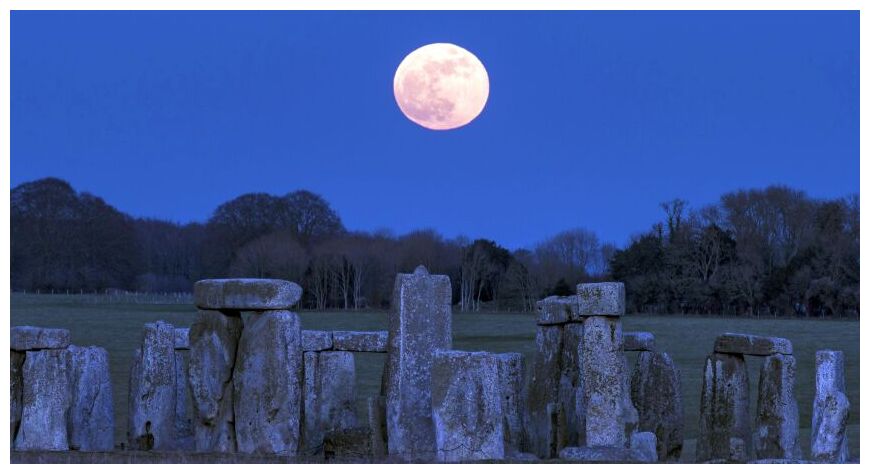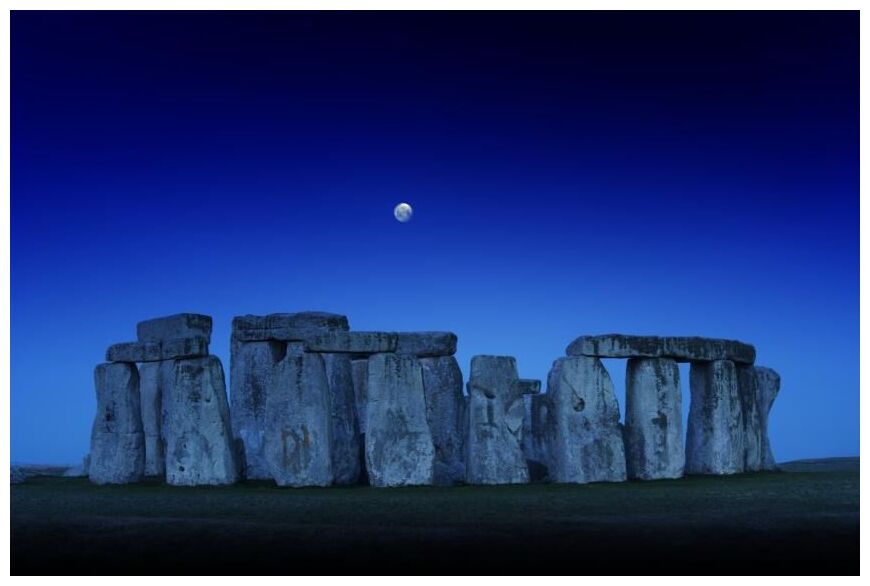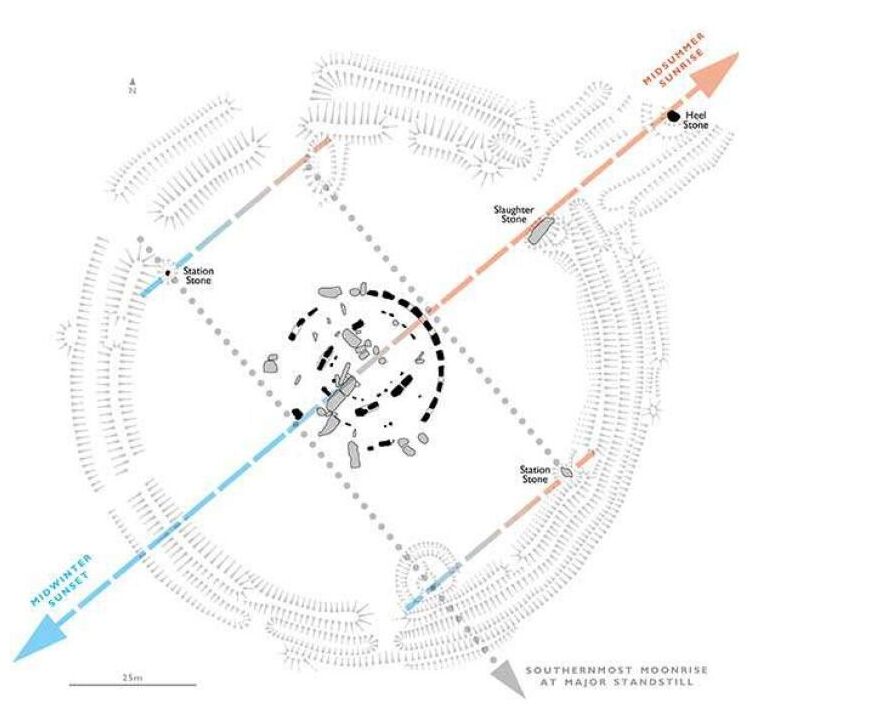
© Andre Pattenden/English HeritageA team of experts are investigating the possibility that Stonehenge aligns with the positions of the Moon, as well as the Sun.
Archaeoastronomers led by English Heritage will study the connection between the ancient monument and a 'major lunar standstill' — a rare astronomical phenomenon which happens every 18.6 years.
It refers to the point when Moonrise and Moonset reach their furthest points along the horizon and is next taking place from this year into next.
Academics from Oxford, Leicester and Bournemouth universities believe these once-in-a-generation lunar movements may have been noticed in the early phase of Stonehenge, and therefore influenced its later design.
Their research into the theory will begin this spring and last until the middle of 2025.
Professor Clive Ruggles, emeritus professor of archaeoastronomy at Leicester University, said: "Stonehenge's architectural connection to the Sun is well known, but its link with the Moon is less well understood.
"The four Station Stones align with the Moon's extreme positions, and researchers have debated for years whether this was deliberate, and - if so - how this was achieved and what might have been its purpose."

© James O Davies/English HeritageEnglish Heritage, along with several archaeoastronomers and the Royal Astronomical Society, will study the connection between the ancient monument and a ‘major lunar standstill’ — a rare astronomical phenomenon which happens every 18.6 years.
"Rarer even than once-in-a-blue-moon, this opportunity allows us to delve deeper into the monument's ancient mysteries and its relationship with celestial phenomena.
"We'll be inviting the public to join us through a series of events this year as we take one more small step towards unravelling the secrets of Stonehenge."
To bring this research to life, English Heritage will livestream the southernmost Moonrise at Stonehenge. The charity will also host a series of events throughout the standstill season including talks, a pop-up planetarium, stargazing and storytelling sessions, and a new display in the exhibition space.
Dr Robert Massey, of the Royal Astronomical Society, said: "Night and day, the Moon is a universally loved feature of the sky, and something all of us are drawn to look at.
"The major standstill offers even more dramatic views of our celestial neighbour when it rises and sets, and will be an astronomy highlight of 2024.
"The RAS is delighted to be supporting events at Stonehenge to mark and investigate this rare event."

© English HeritageAcademics believe such once-in-a-generation lunar movements may have been noticed in the early phase of Stonehenge, and therefore influenced the monument’s later design (pictured).
"Unlike the Sun, tracking the Moon's extremes isn't straightforward, requiring specific timing and weather conditions.
"We want to understand something of what it was like to experience these extreme Moonrises and sets and to witness their visual effects on the stones (for example, patterns of light and shadow), and consider modern influences like traffic and trees, and to document all of this through photography for future study."
Dr Fabio Silva, a senior lecturer in archaeological modelling at Bournemouth University and co-founder and managing editor of the Journal of Skyscape Archaeology, said: "Bournemouth University lecturers and students will document Moonrises and sets at key moments in the year when the Moon will be in alignment with the Station Stones.
"This will happen at different times of day and night around the year, with the Moon being at the right place on different phases each month. Hence, some will be more dramatic (such as a full Moon or crescent Moon) than others.
"The team will capture these phenomena, aiming to explore the complex relationship between the landscape, stones, and the Moon over the course of the standstill 'season'".
To find out more about Stonehenge, its possible connection to the Moon and the ways in which you can get involved, visit: www.english-heritage.org.uk/visit/places/stonehenge/things-to-do/major-lunar-standstill/
Source link

